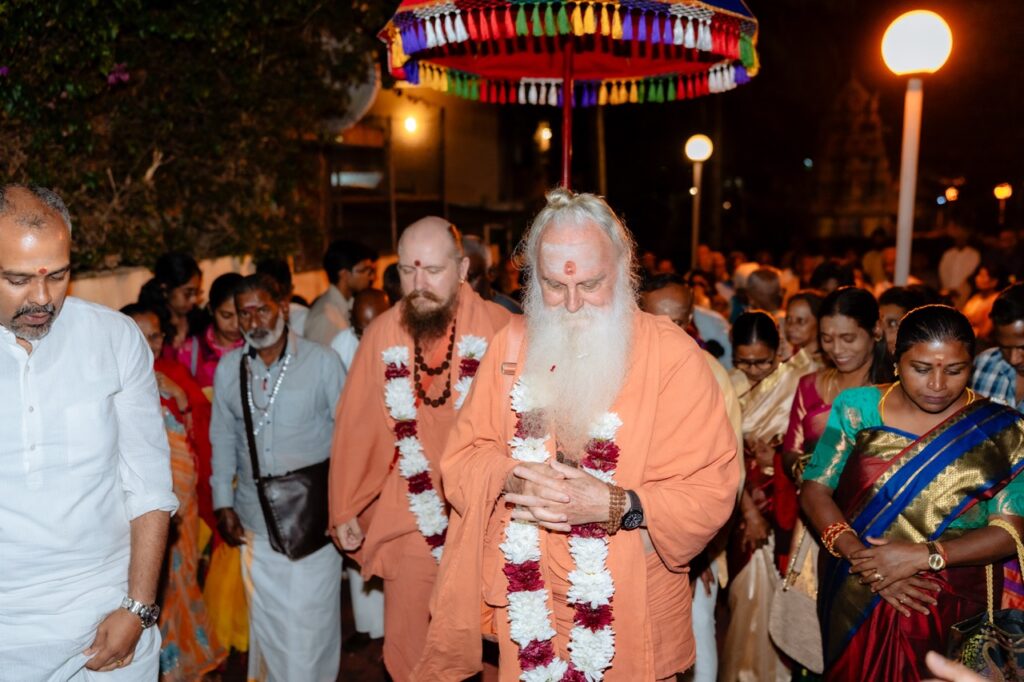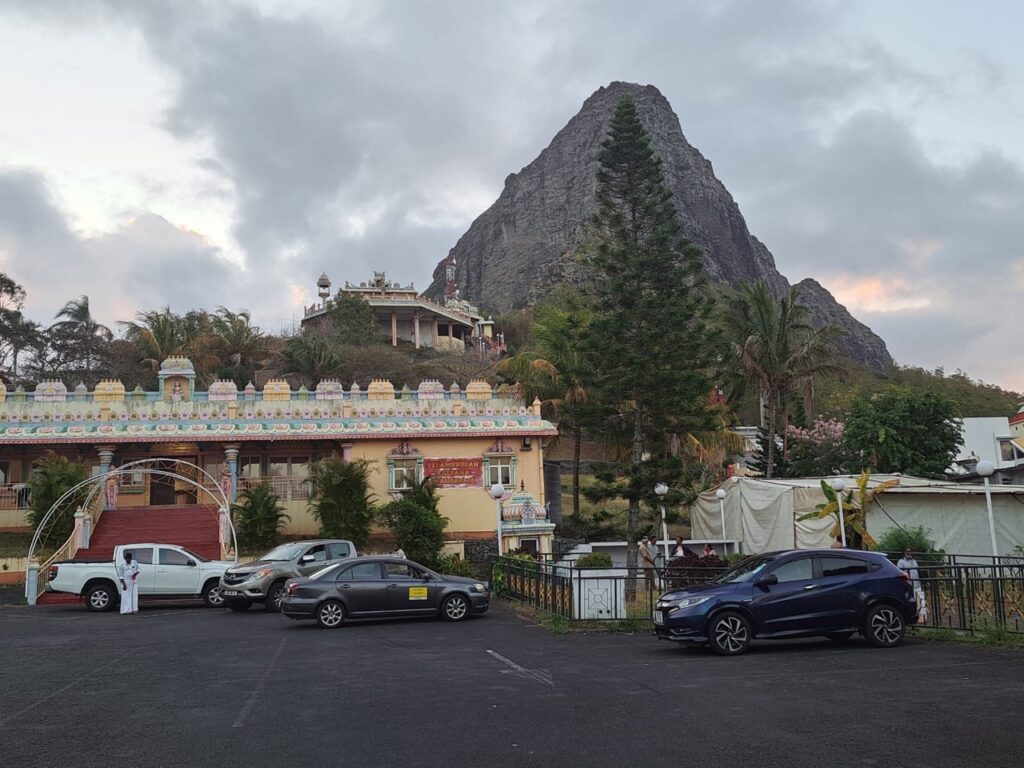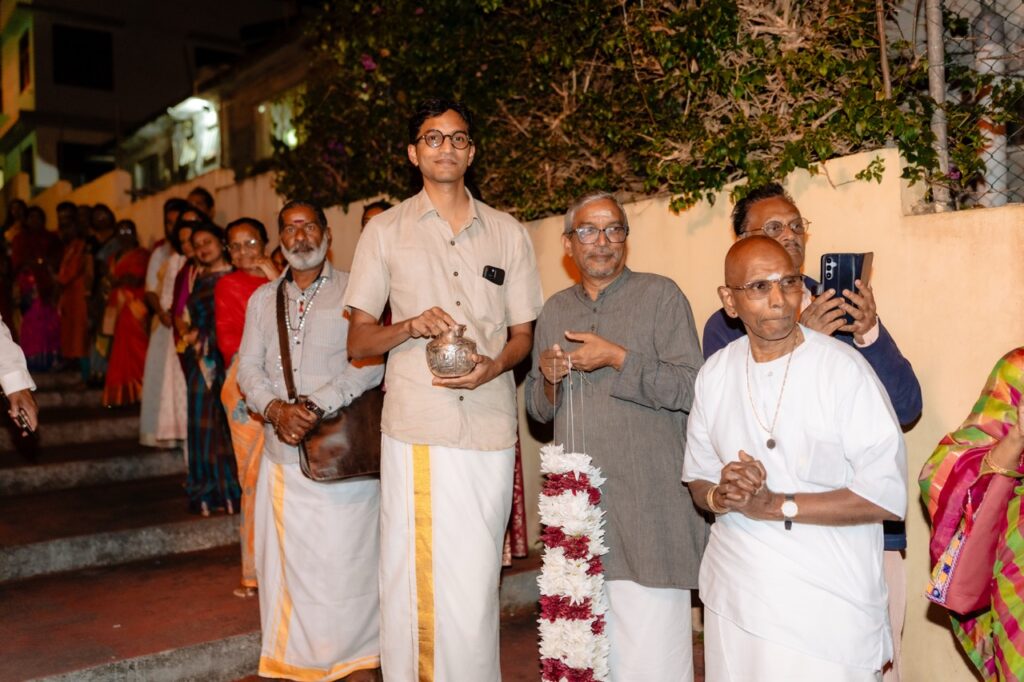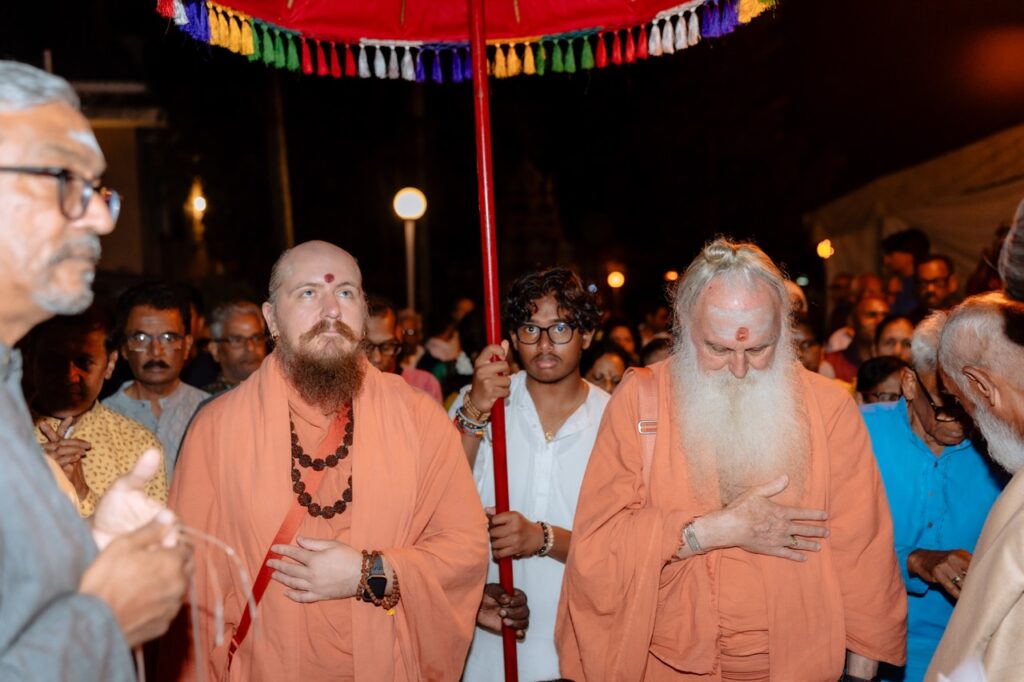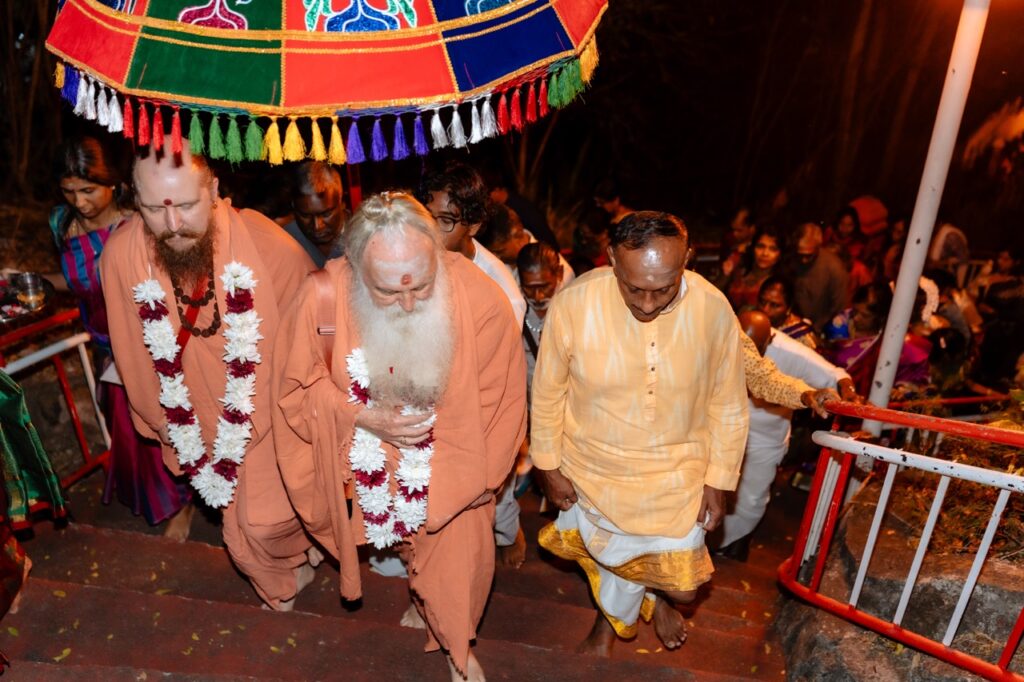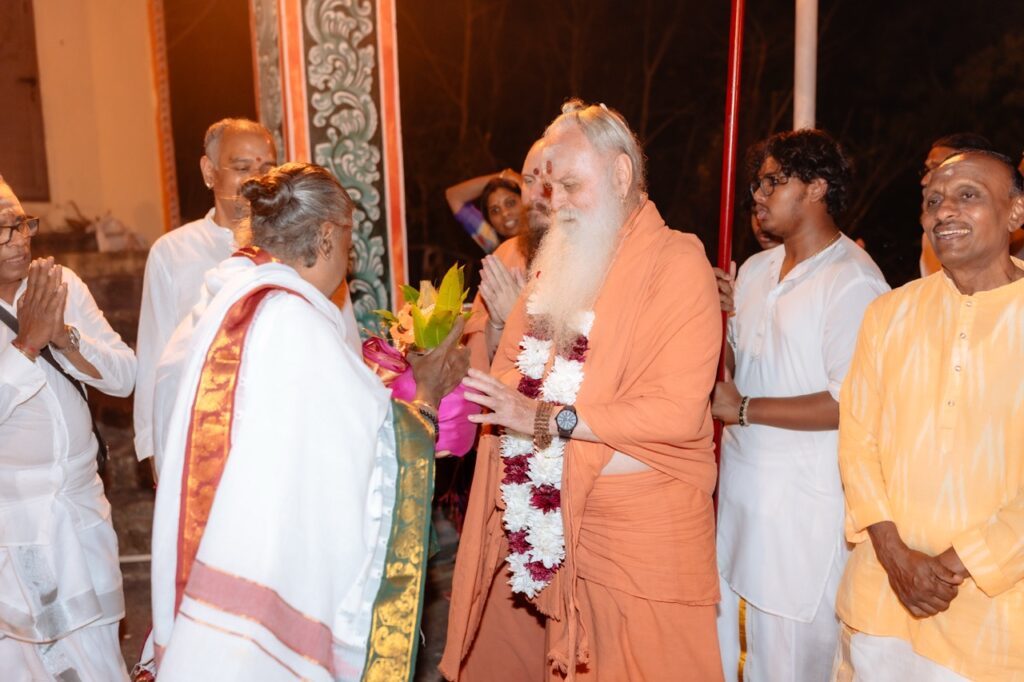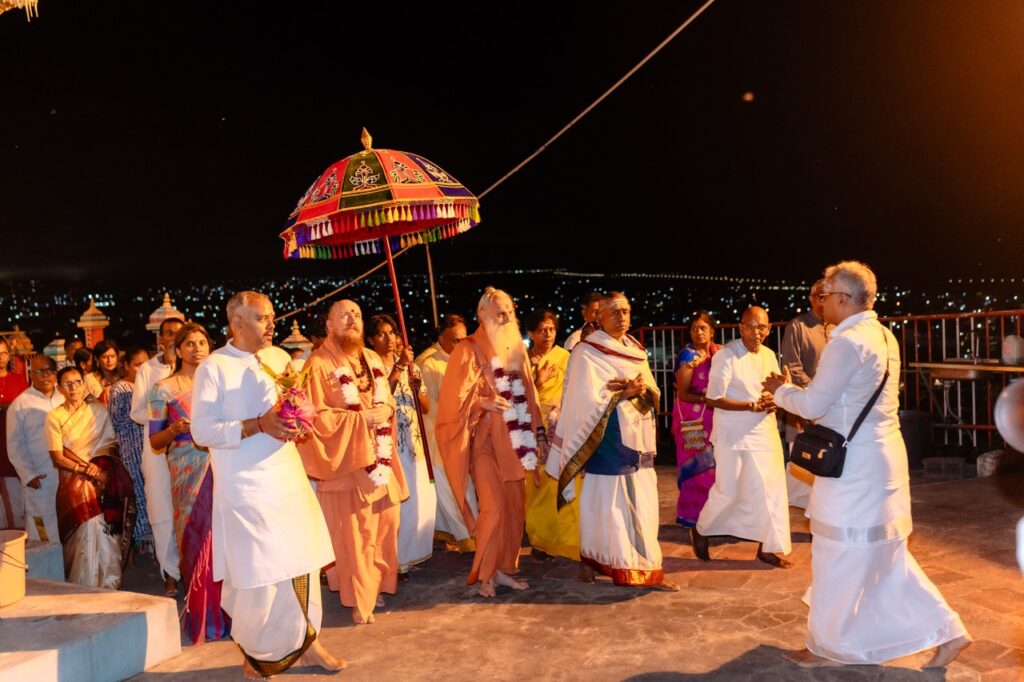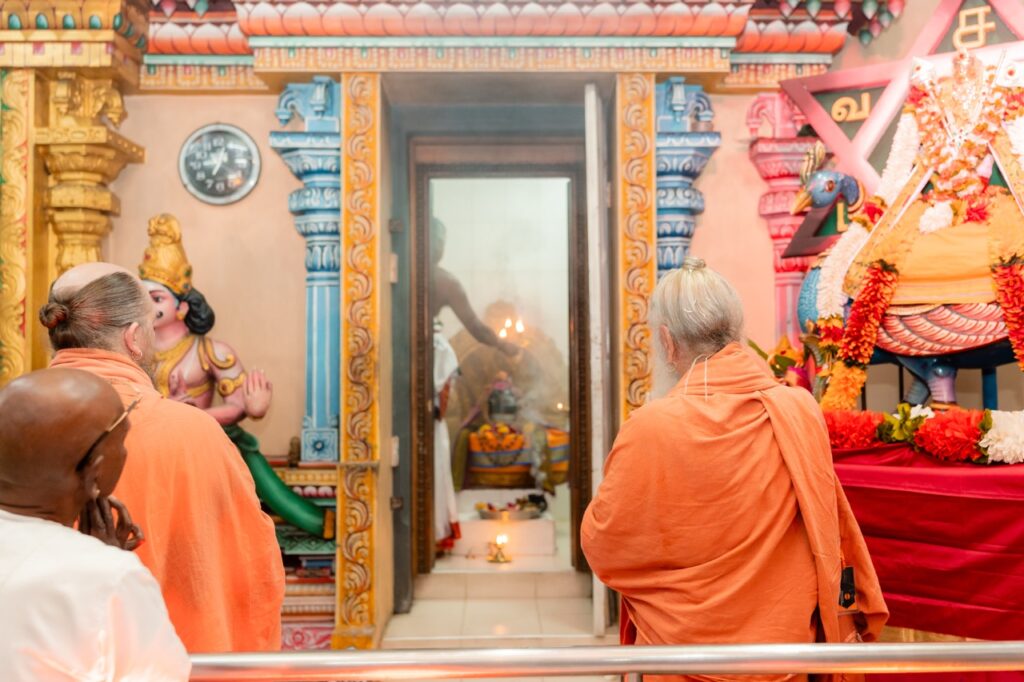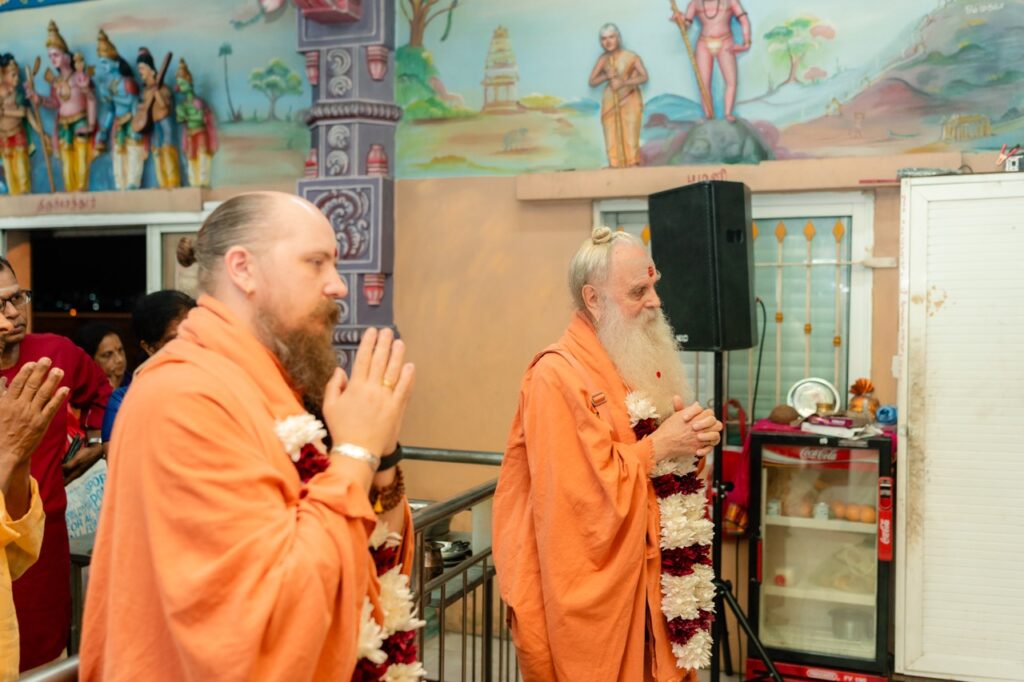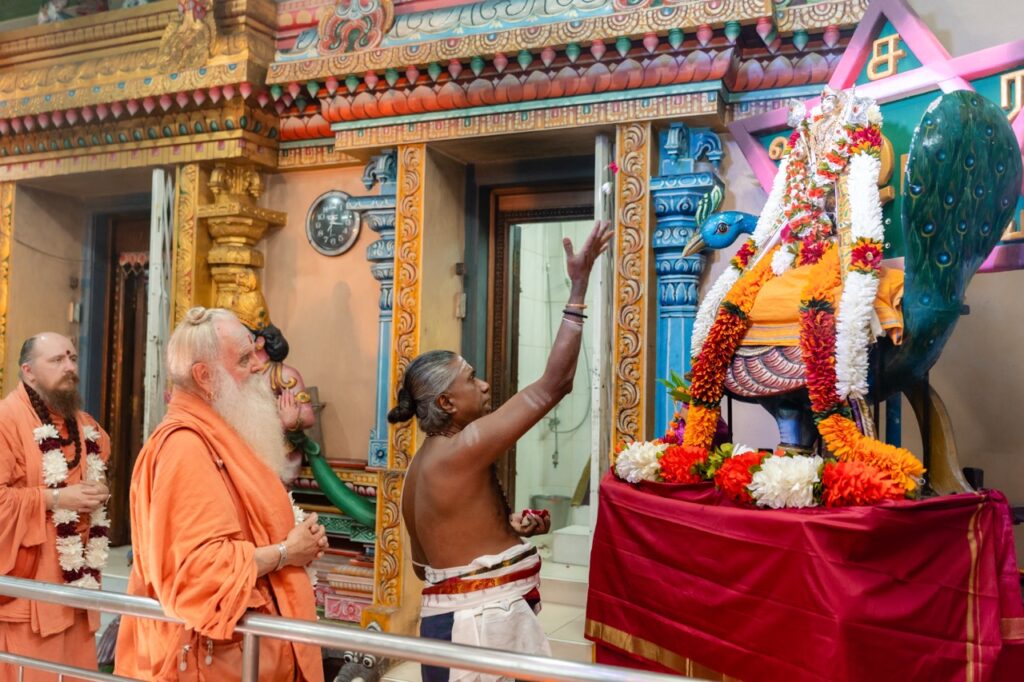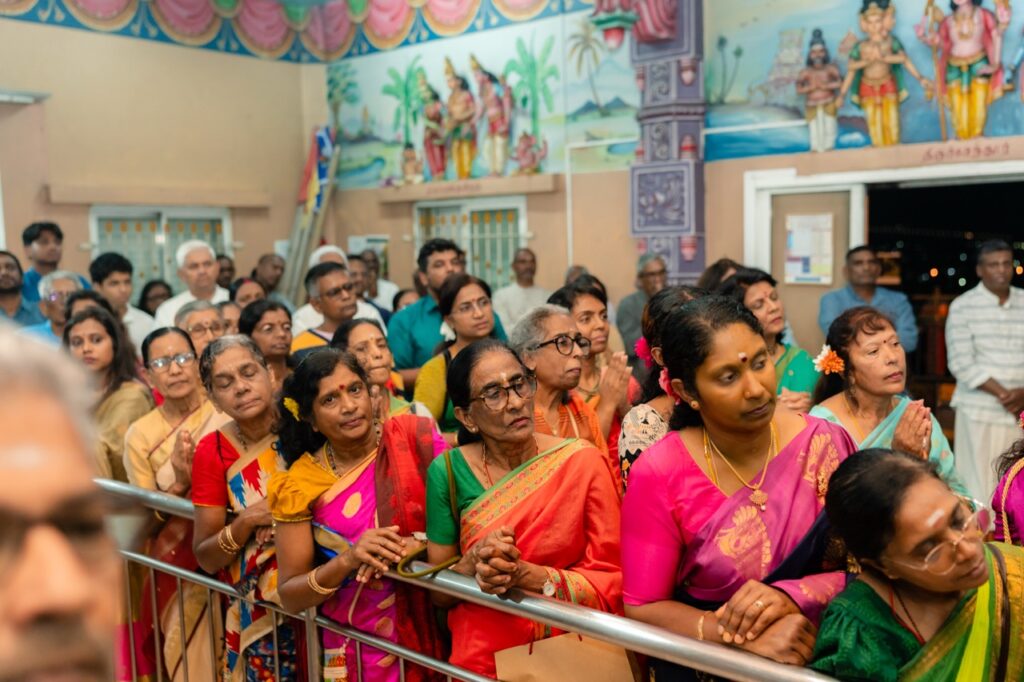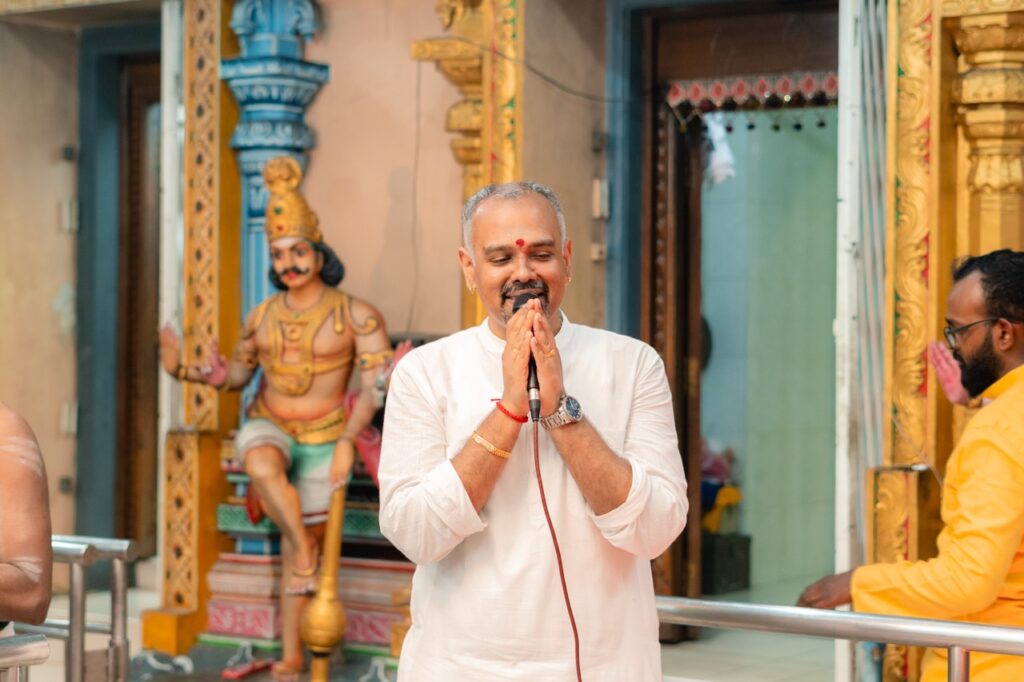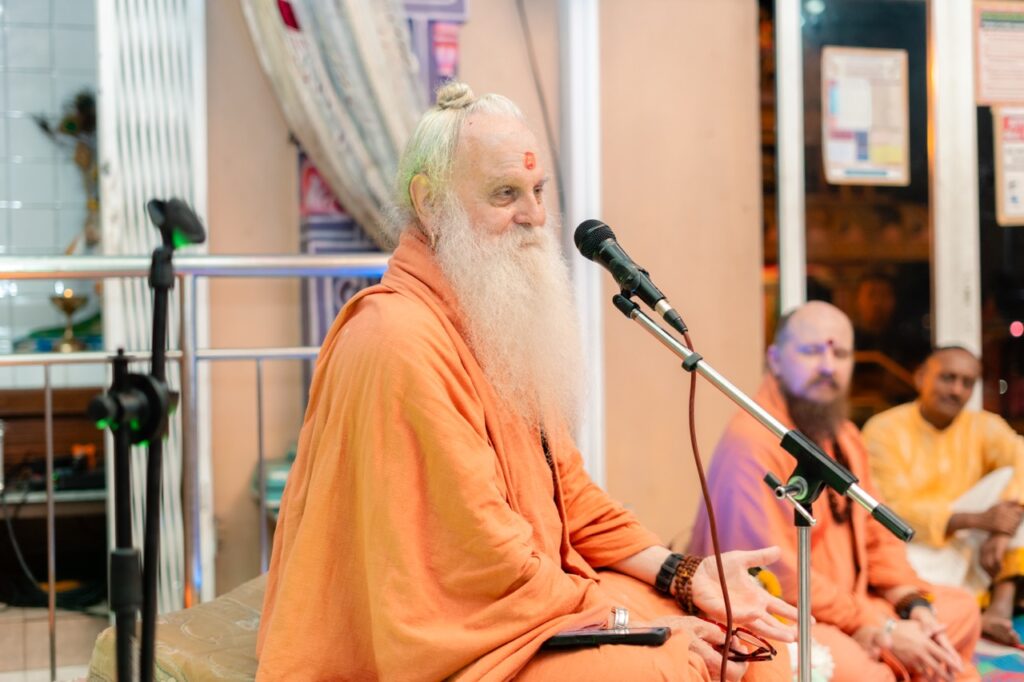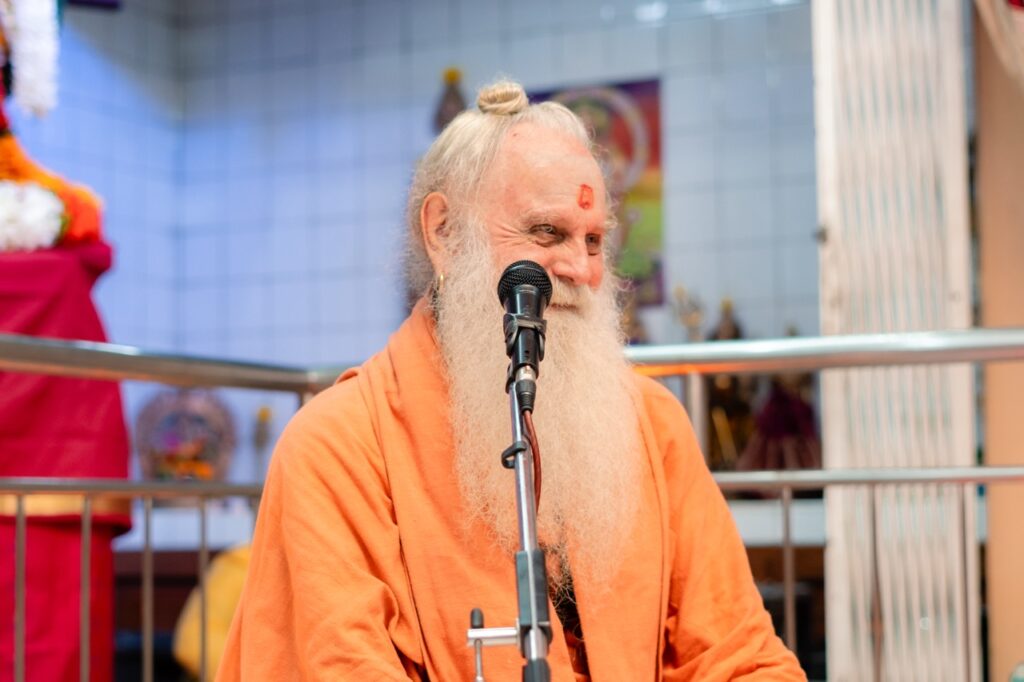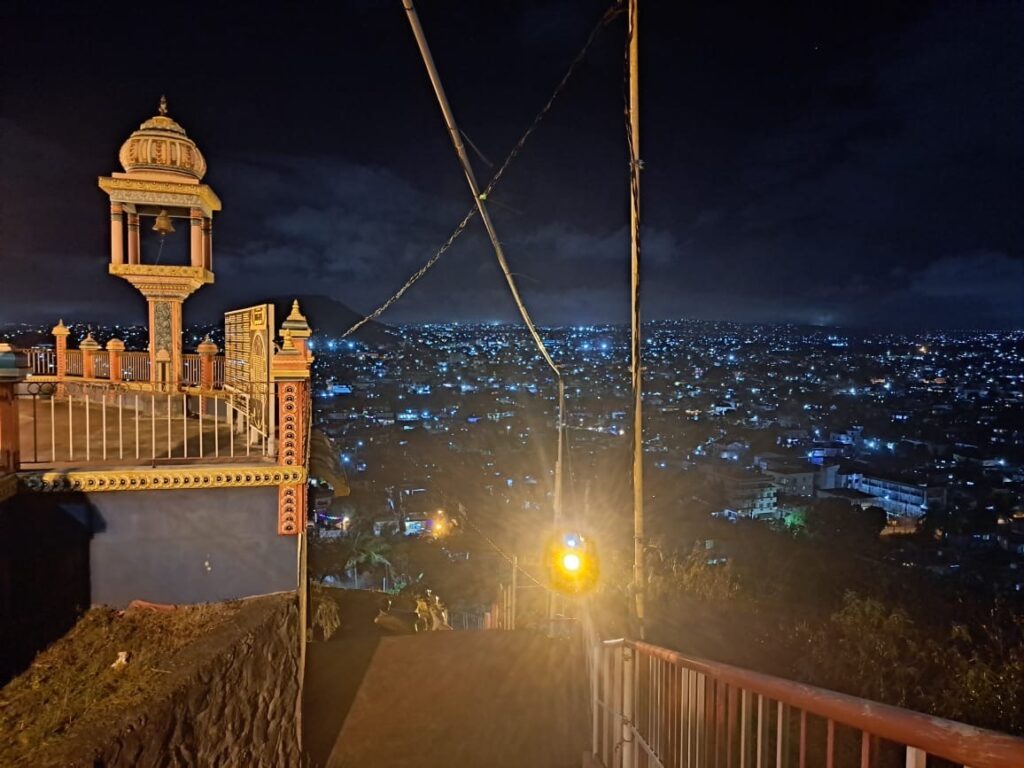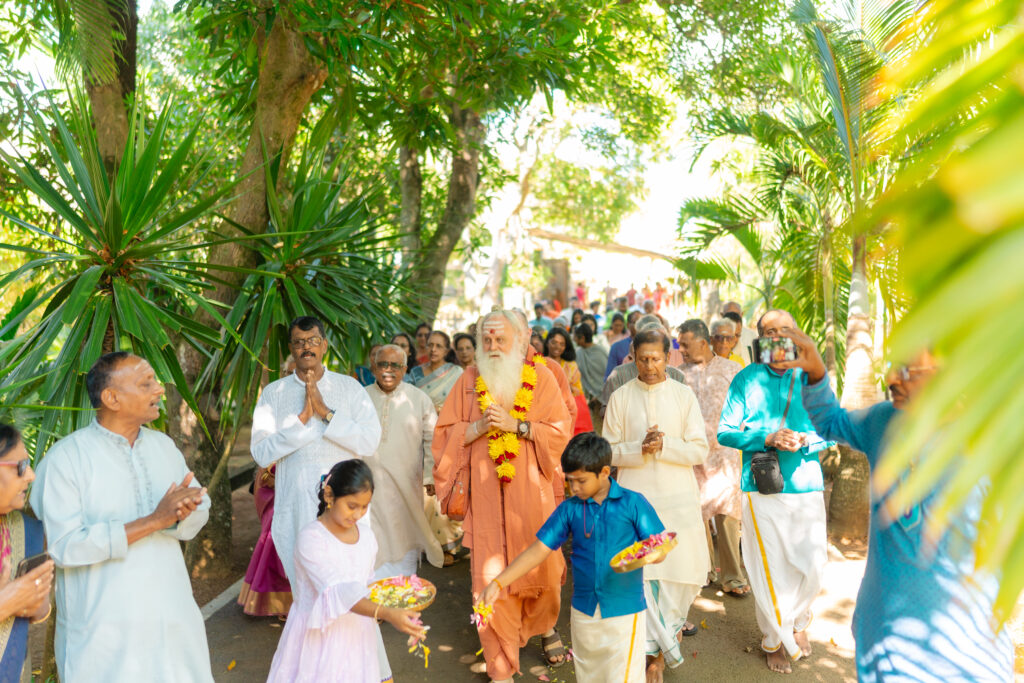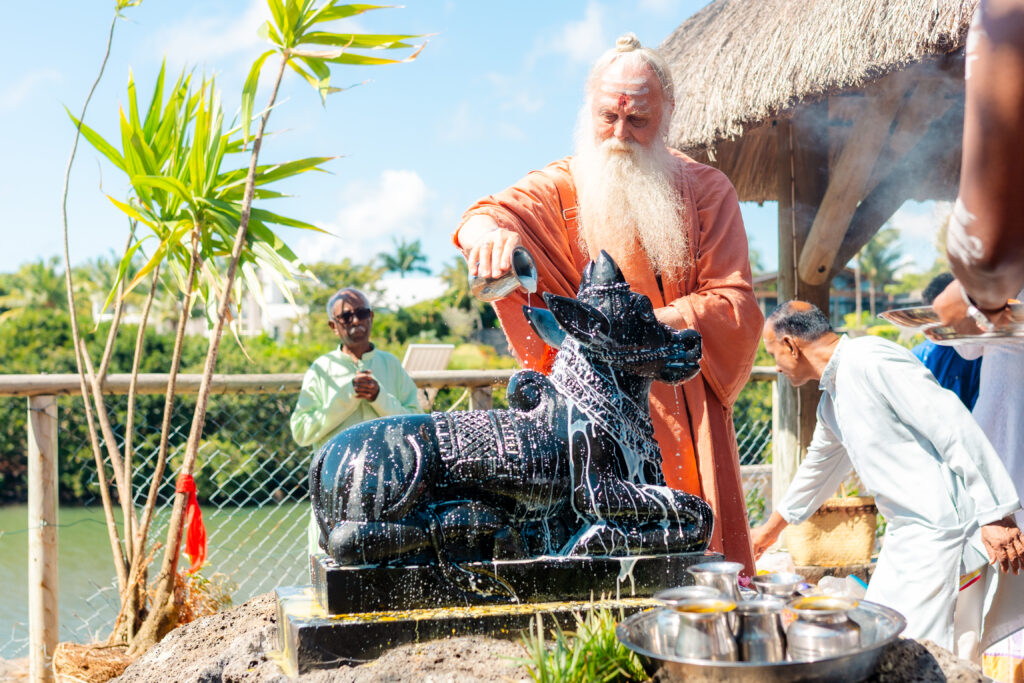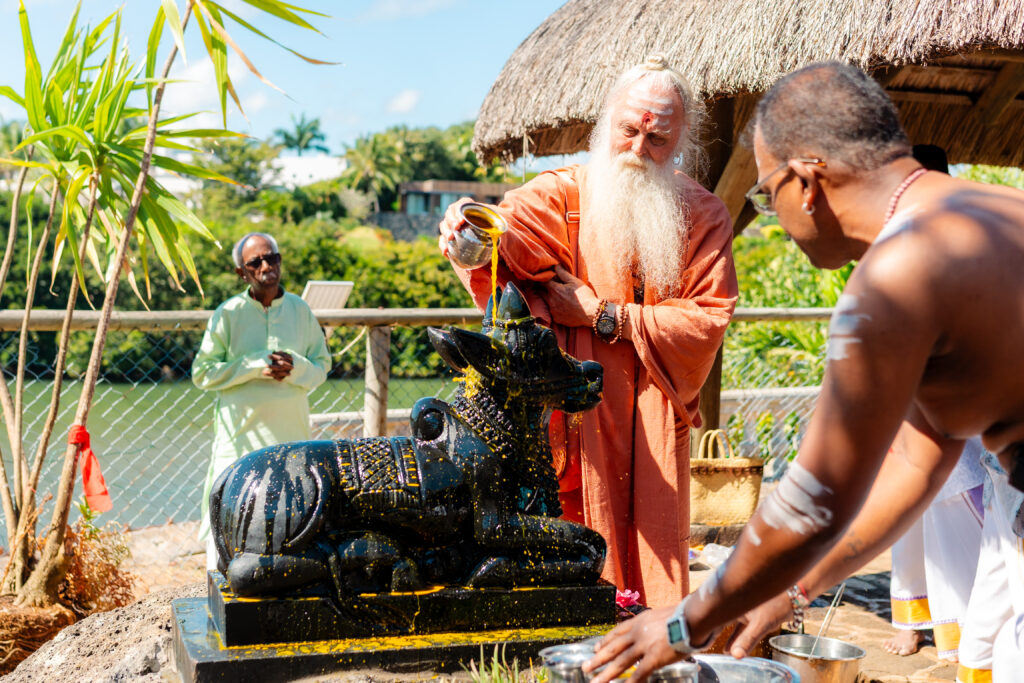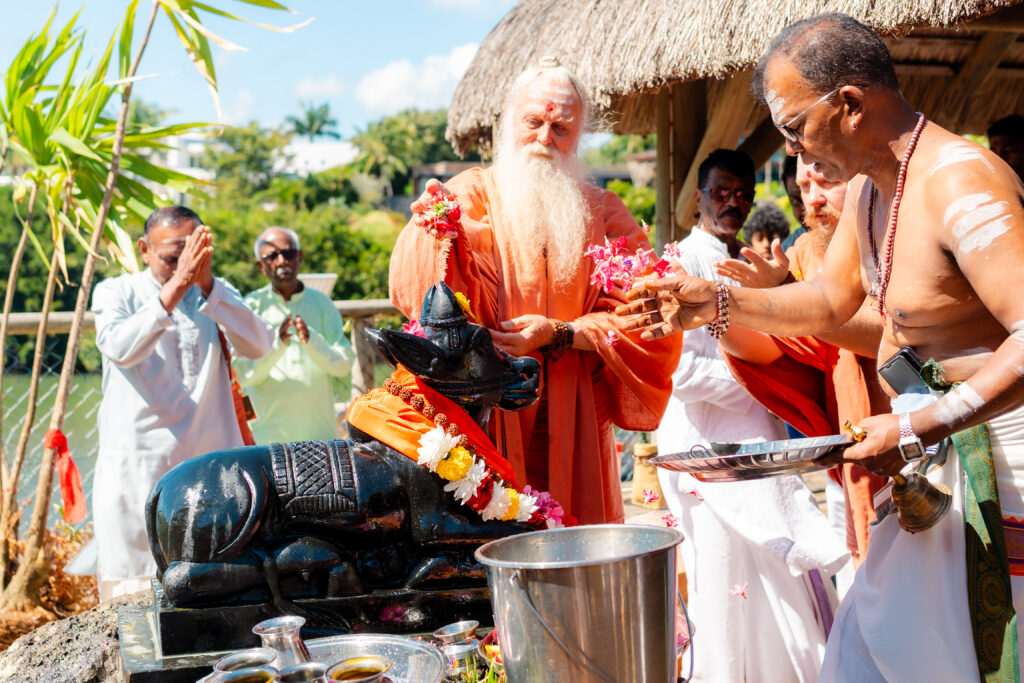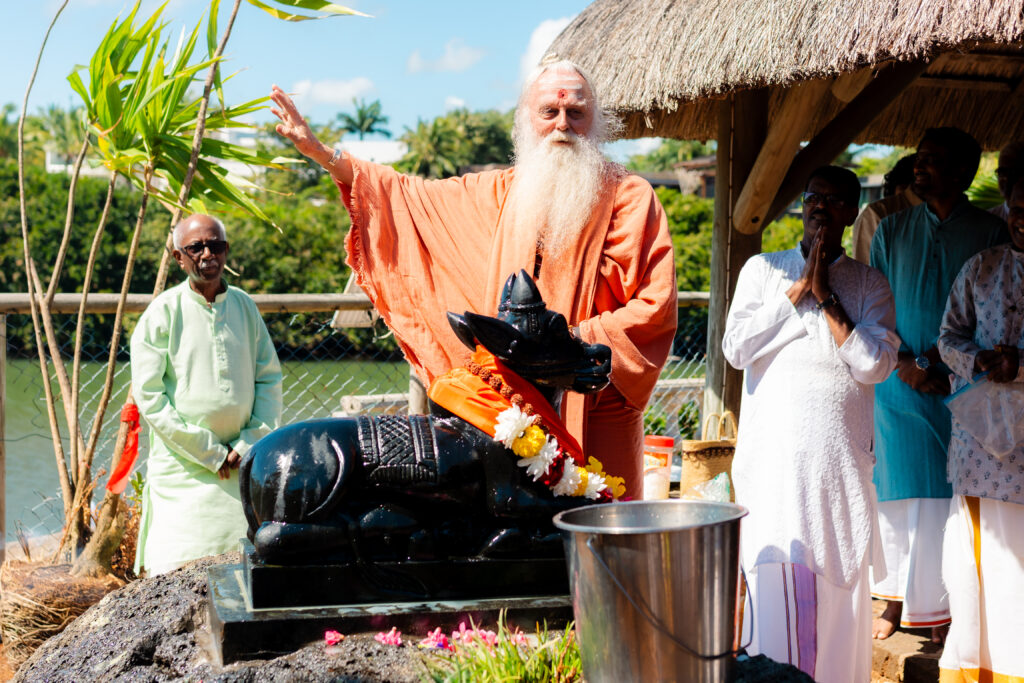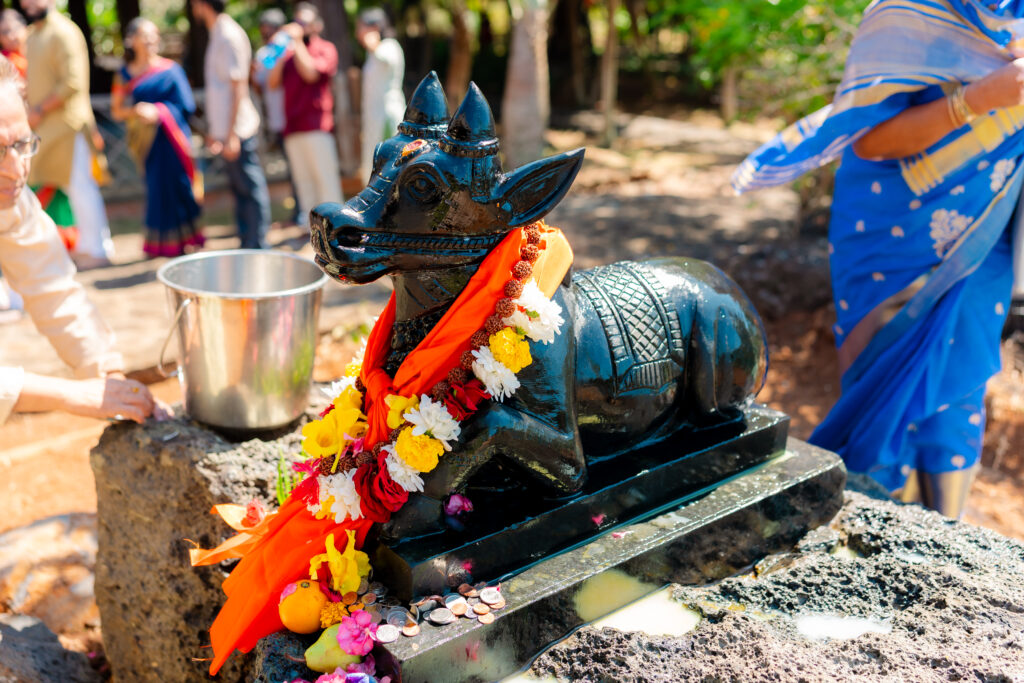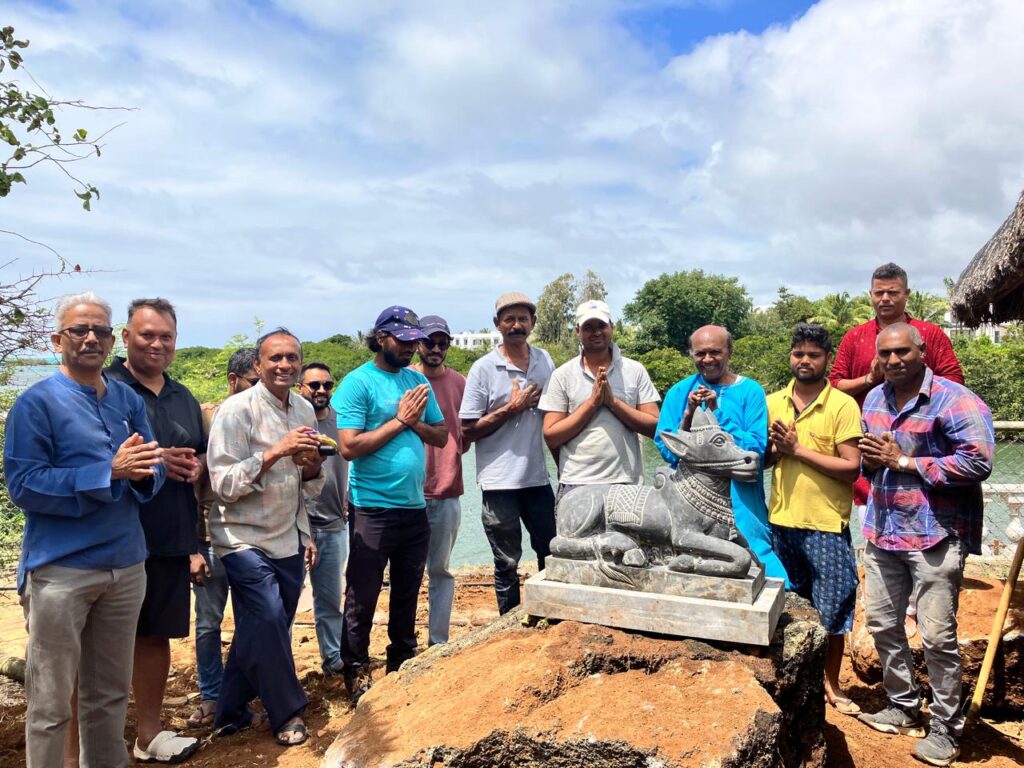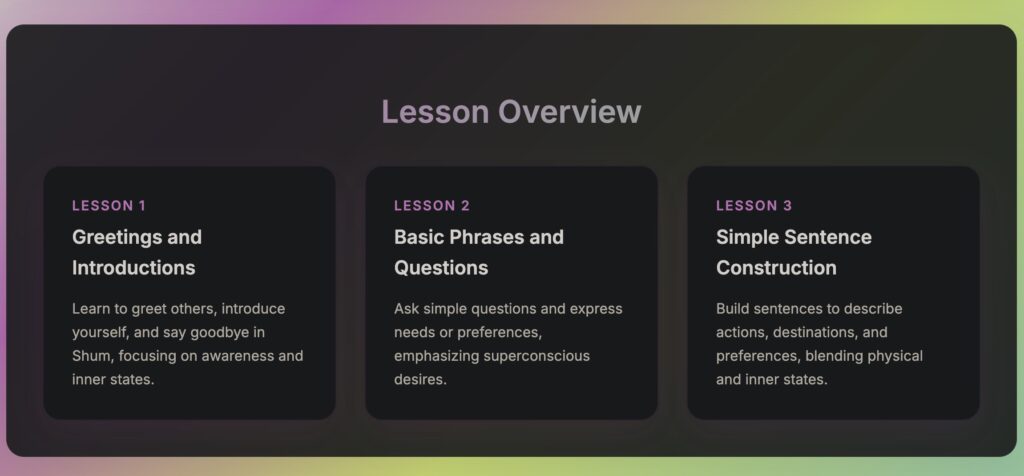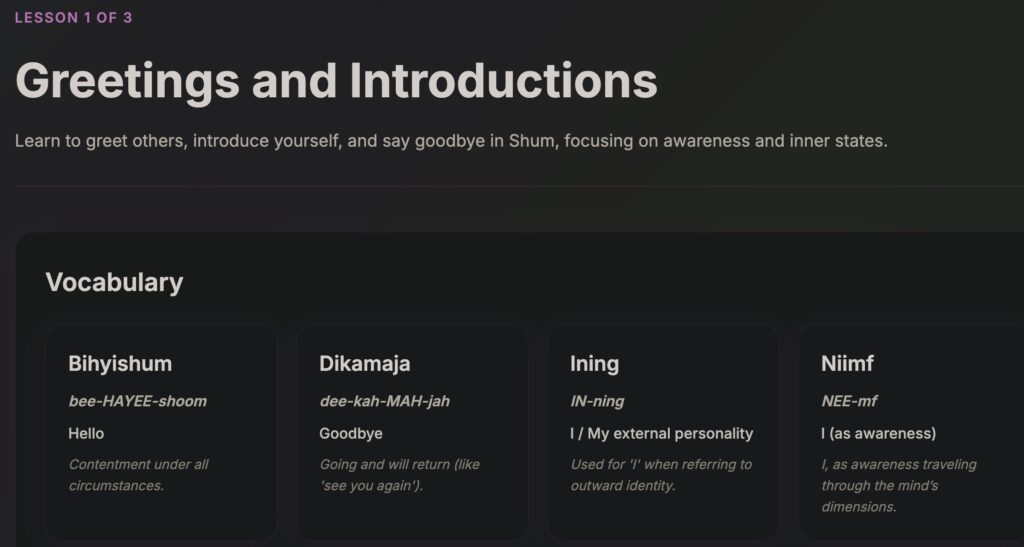Darshan, Grace of the Guru, Part Five
(This also contains a lesson from Chapter 45, Spiritual Training.)
Satguru Bodhinatha Veylanswami gives his weekly upadesha in Kadavul Temple at Kauai’s Hindu Monastery in Hawaii. It is part of a series of talks elaborating on the inspired teachings of Satguru Śivaya Subramuniyaswami as found in his book Merging With Śiva.
“Once someone said of my guru, Yogaswami, “You have to make yourself like a fool to go in front of that man. He will speak as a madman of God to you. But if you go to him in an ordinary state of consciousness, he will say, ‘I’m just like you. Go away. I have nothing to say. Nothing comes from the inside. Go away!’ ” You have to be an intellectual fool to be in front of the satguru. If you hear ordinary things from the guru, look closely at yourself. He is your closest mirror. He is only biding his time with you until the extraordinary ones come along to utilize his depths. Most gurus enjoy an exquisite inner life that is so refined and interesting, it keeps them very well occupied. “
Darshan, Grace of the Guru, Part Five Read More »
